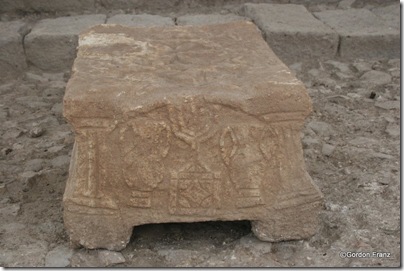Excavations at the site of Omrit in northern Israel are wrapping up for the summer, and from the photos posted on the unofficial blog, it looks like they made some impressive discoveries this year.
In particular, note the beautifully frescoed wall near the earliest temple.
Omrit is not far from Caesarea Philippi (Banias), and the excavators have suggested that Herod’s temple was located at Omrit instead of Caesarea Philippi. A series of temples have been found at
Omrit, dating from approximately 50 BC to AD 360. For a brief review, see this post.
Thanks to Roi Brit for the tip.

